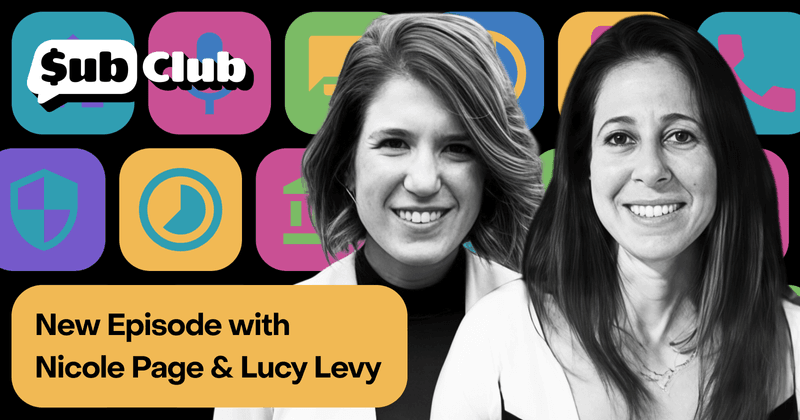What does it take for a legacy brand to compete with, and beat, the new wave of fitness apps? For Zumba, the answer wasn’t simply to launch an app as fast as possible. Instead, they took the long road: 24 years of relentless customer research, iteration, and community-building, all leading up to the release of their first direct-to-consumer app in 2024.
While many brands rush into the app store with flashy features or giant content libraries, Zumba did things differently. They spent years learning from instructors, studios, and everyday users around the world, ultimately building an app experience that’s less about technology and more about helping people feel welcome and succeed, especially beginners. In a crowded market dominated by free YouTube videos and digital fitness startups, Zumba’s app is now outperforming peers where it matters most: retention and lifetime value.
On this episode of Sub Club, Zumba’s Lucy Levy (Chief Consumer Officer) and Nicole Page (Senior Product Manager) share the experiments, data, and hard-won lessons behind their breakout success and what every subscription app can learn from Zumba’s approach.
Key takeaways:
- Customer feedback trumps assumptions: Every feature, from VHS tapes to app onboarding, started with real user conversations.
- Beginners are your growth engine: 70% of users are new to Zumba, so onboarding is designed to move them quickly to early wins, driving a 60% annual-plan opt-in rate.
- Programs > content libraries: Users will pay for curated, guided journeys. Those in programs watched 2x as many videos and had double the retention.
- Web checkout boosts LTV: Zumba’s shift to web billing (with Apple/Google Pay) dropped instant conversions by 25%, but annual plans and retention soared, growing LTV 17%.
- Test everything, move fast: The Zumba team pivots daily based on metrics ��— speed of iteration beats legacy playbooks.
How Zumba’s app turned user feedback into a retention machine
Most fitness brands chase trends. Zumba spent 24 years listening: on the phone, in studios, and now in-app. Every product evolution, from instructor certifications to today’s digital experience, was sparked by user insight, not top-down decisions. With over 70% of new users identifying as beginners, Zumba built onboarding and programs to lower the intimidation factor and help people reach that crucial “three class” milestone, proven to unlock long-term retention.
Why structure wins: The value of guided programs
The digital fitness space is flooded with free content (hello, YouTube). Zumba’s insight: people are overwhelmed by choice, not lacking for options. By offering goal-based, beginner-friendly programs instead of endless video libraries, subscribers watched twice as many classes and stuck around longer. As confirmed in State of Subscription Apps 2025, habit-building features and onboarding milestones are among the strongest levers for retention in Health & Fitness apps.
Web checkout: Lower conversions, higher LTV
Facing new App Store policy changes, Zumba experimented with routing users to a streamlined Stripe-powered web checkout. Apple Pay and Google Pay were preselected to reduce friction. The result? Immediate conversions dropped by 25% but annual plans, retention, and LTV all jumped. Overall, Zumba saw a 17% lift in LTV.
The bottom line: Test, listen, and move faster than legacy brands
Zumba’s launch wasn’t “late” — it was intentional. Through hundreds of rapid experiments, listening to their most dedicated (and most beginner) users, and putting LTV over quick wins, Zumba’s team proved that even the biggest legacy brands can out-iterate the competition.
The lesson: Community-powered innovation, not just content, drives outsized growth.

